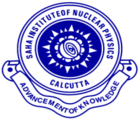Speaker
Description
Blazars are radio-active Active Galactic Nuclei (AGN), where the relativistic jet is pointed towards our line of sight. The corresponding broadband spectral energy distribution of a blazar shows two broad components. The lower energy component is located in the optical-to-X-ray band while the high energy component peaks in the gamma-ray regime. Blazars are classified depending on the position of the peak frequency of the synchrotron component. Extreme high-frequency BL Lacs (EHBLs) objects show a synchrotron peak frequency above 1017Hz.
1ES2344+514 is a nearby blazar having a redshift of z=0.044. It shows intermittent EHBL features- sometimes it behaves as EHBL and other times not. This source was detected in VHE by the Whipple 10m telescope during its bright flare in December 1995. Following the event, few multi wavelength (MWL) campaigns have been organised to have a better study of the source. During most of these observations, the source was found to be in a much lower state than the flaring one. The broadband SED thus obtained describes the source during its low activity. A single zone synchrotron self compton(SSC) model well described the data in this period.
This talk will discuss the results obtained from the MWL campaigns carried out by the MAGIC collaboration following the 2016 flare and a much more dense campaign between 2019 and 2021. The main goal of this 2019-2021 campaign is to provide a characterisation of the intermittent EHBL behaviour of the source.
